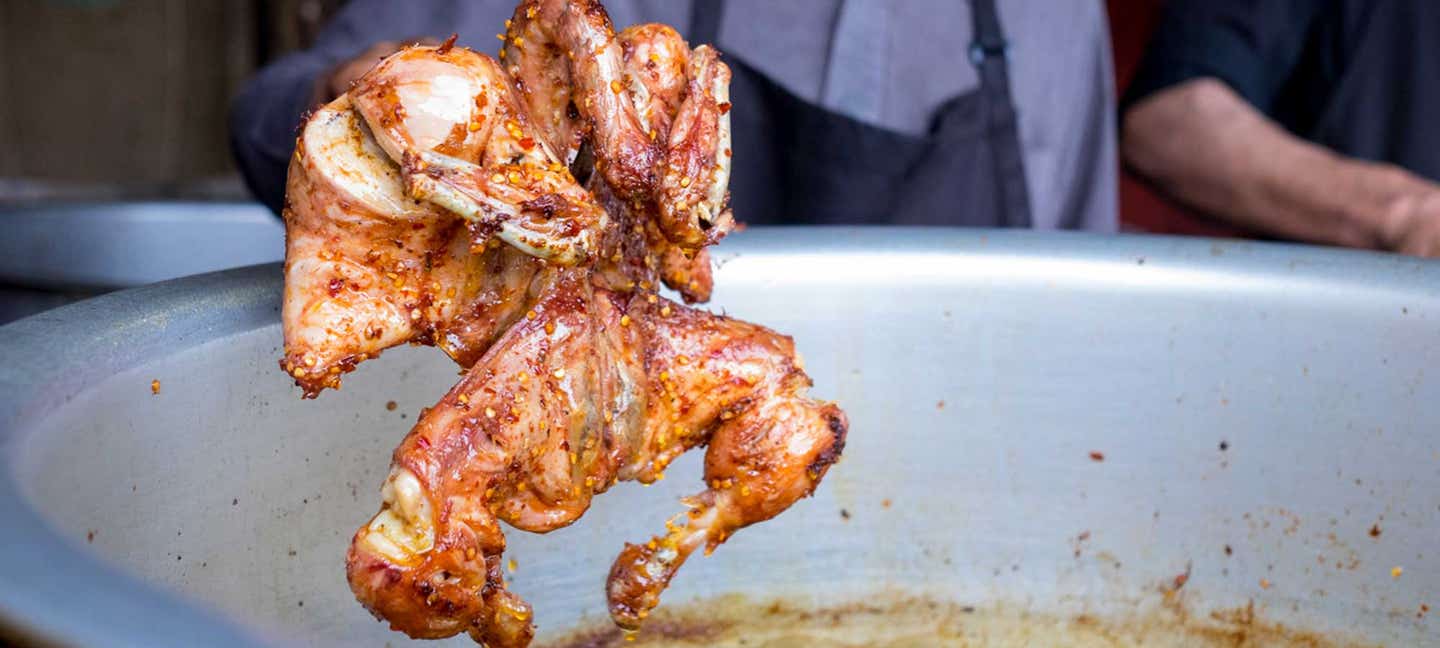
This Firecracker Chicken is the Heart of Pakistan’s Nathiagali Hill Station
It’s been made with the same blisteringly hot spice rub for nearly 50 years and restaurant owner Muhammad Azad has no intention of changing his recipe
It is the middle of the afternoon and a blanket of orange light, neither bright nor quite at the stage where it has begun to fade, covers the the Pakistani mountain town of Nathiagali. But within the confines of its gentle glow there is chaos. At the height of its summer tourist season, the sleepy hill station seems to have become completely unhinged. Travelers from all over the country pour in like a conquering horde, surging down the main thoroughfare—and the many sinuous arteries that lead out of it—in search of the perfect holiday selfie, a pocketable souvenir at the numerous handicraft shops, or, if they know what's good for them, the Taj Mahal restaurant's blisteringly hot fried patakha chicken.
Hill stations like Nathiagali were first built during British colonial rule as a way for India’s foreign rulers to escape the excruciating heat of the plains during the summer months. With timber churches, mock Tudor public offices, and homes with sloping roofs that clung to the tree studded hills, the officials of the Raj made every effort to recreate a corner of Britain in this alien land. Today, however, due to poor urban planning, cowboy real estate developers, and an overload of visitors, these settlements are no longer the idyllic summer getaways they once were, but rather heaving concrete jungles akin to any other town in the rest of Pakistan. Nathiagali is no exception, having failed to grapple with the double-edged blessing and curse of tourism while also maintaining its original essence. What it does have, however, is a signature dish, a small piece of its history that’s become synonymous with the place itself.
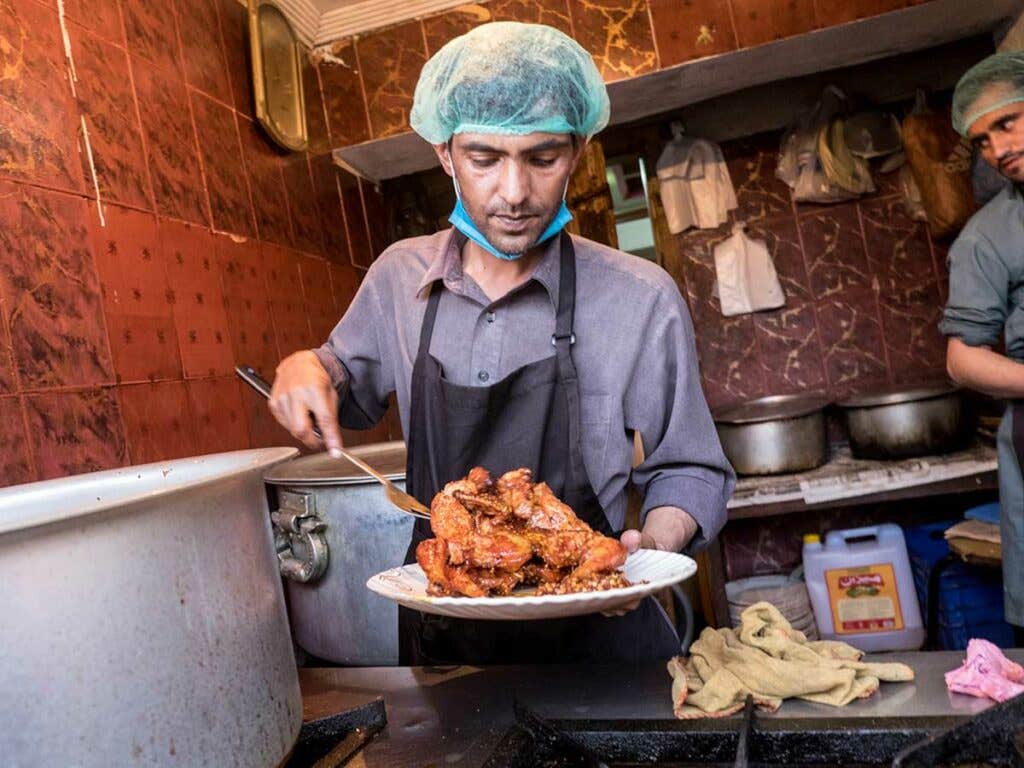
At first look, the Taj Mahal restaurant is like any other commercial building in town: a squat concrete block with a multi-coloured façade that’s almost fully worn away. A green sign emblazoned with the “Sprite” logo bears the restaurant’s name, and an ice-cream freezer by the front entrance completes the look, a nondescript exterior that belies the culinary magic that occurs inside. The hive of activity at the door is the only detail that gives it away.
The restaurant started life as a modest, family-run dhaba—a traditional roadside food stall commonly found across the subcontinent—which acted as a pit stop for cargo trucks that ran across this route. The food they served then was unassuming, and typical of dhaba-style cuisine: daal, meat karahis, and some sort of curried vegetables all accompanied by the familiar comforts of freshly baked roti. Its fortunes changed forever, though, when on one day in 1971, the owner, Muhammad Azad, decided to experiment with a routine chicken dish. He marinated it in a fiery hot spice rub of his own invention and served it to a group of friends. He was sure they wouldn't like it because of the intense heat, but they did. They loved it so much, in fact, that they implored him to add it as a regular item on his menu.
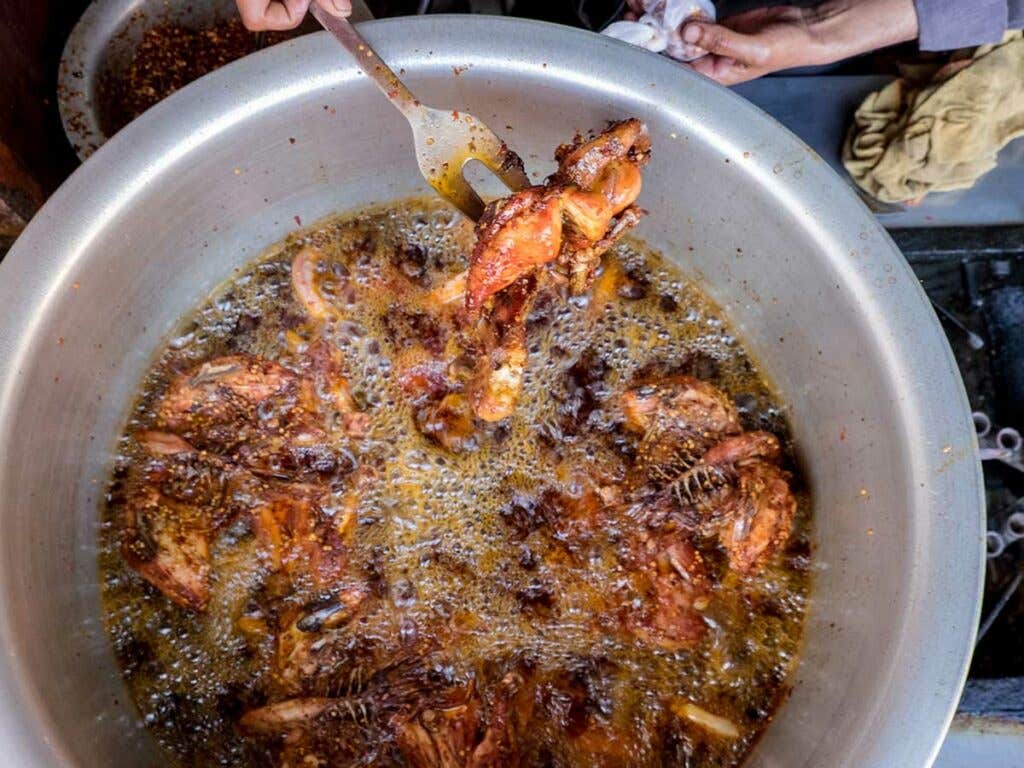
What started off as a whimsical gastronomic experiment soon became a local treasure. But the origin story of Azad's chicken wouldn't be complete for more than quarter of a century: In 1997, Azad was visited by a European tourist who had come to try the fiery meal. After only a few bites, the heat caused him to experience the disquieting flashes of mortality and he asked for a less spicy helping. Azad declined. It was the patakhas (firecrackers) that were set alight in the mouth from the spice rub which made the dish; without it, it wouldn't be the same. With that, patakha chicken was born.
Azad, now 86, still comes to the Taj every day for several hours in the afternoon. Draped in a traditional chador and wearing his customary Kashmiri cap, he sits on a plastic chair near the kitchen, gently absorbing the rhythms and rituals of his small restaurant kingdom. Every so often he is joined by a friend to discuss the news and gossip of the day, or greeted by customers who are excited to encounter this local legend. The day-to-day operations, though, are left to his grandson Faizan Ali, a friendly and practical man who seems a more-than-worthy custodian.
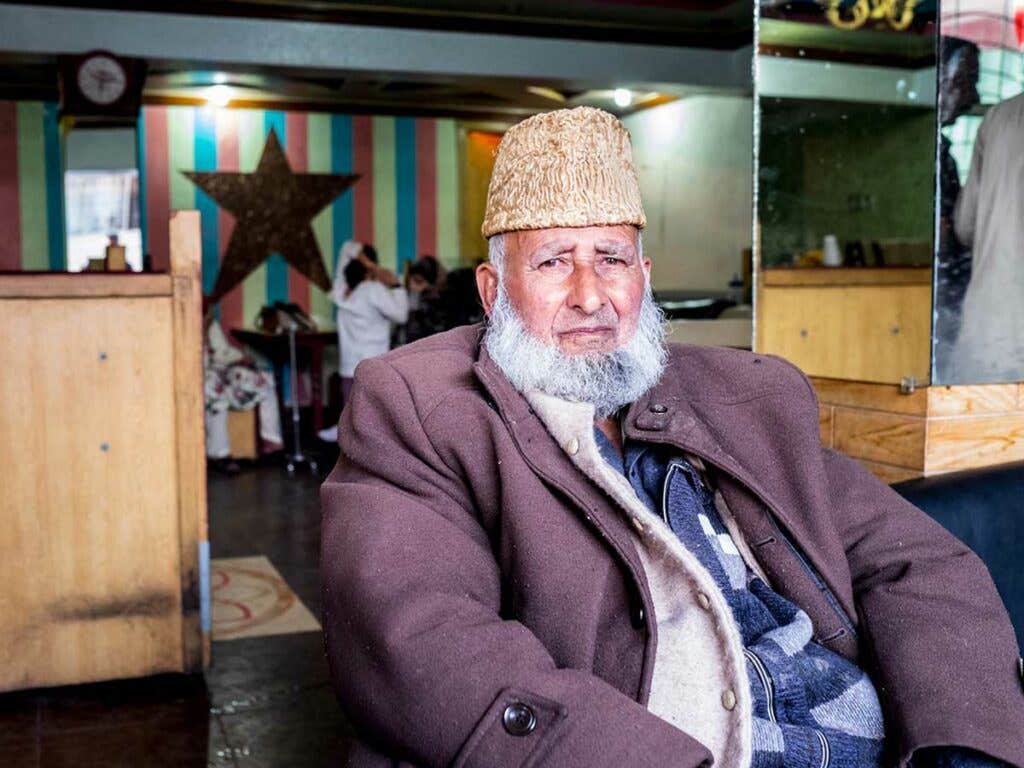
“The working day at the restaurant tends to begin at six or seven in the morning,” Ali says. “After doing much of the basic prep, we half-fry and leave to rest about 100 of the chickens in anticipation of the lunch service, and then this continues for the rest of the day. Apart from a small slot in the afternoon, the traffic to the restaurant is unrelenting, and lasts until we close at midnight.”
Technically, the chicken is not too difficult to make. A fiery masala made of salt, black pepper, crushed red peppers, garlic, and various other spices the restaurant is unwilling to disclose is applied to a whole chicken left to freeze for at least six hours. Once frozen, the chicken is fried whole in a pot of hot oil and served with an extra helping of chiles on the side.
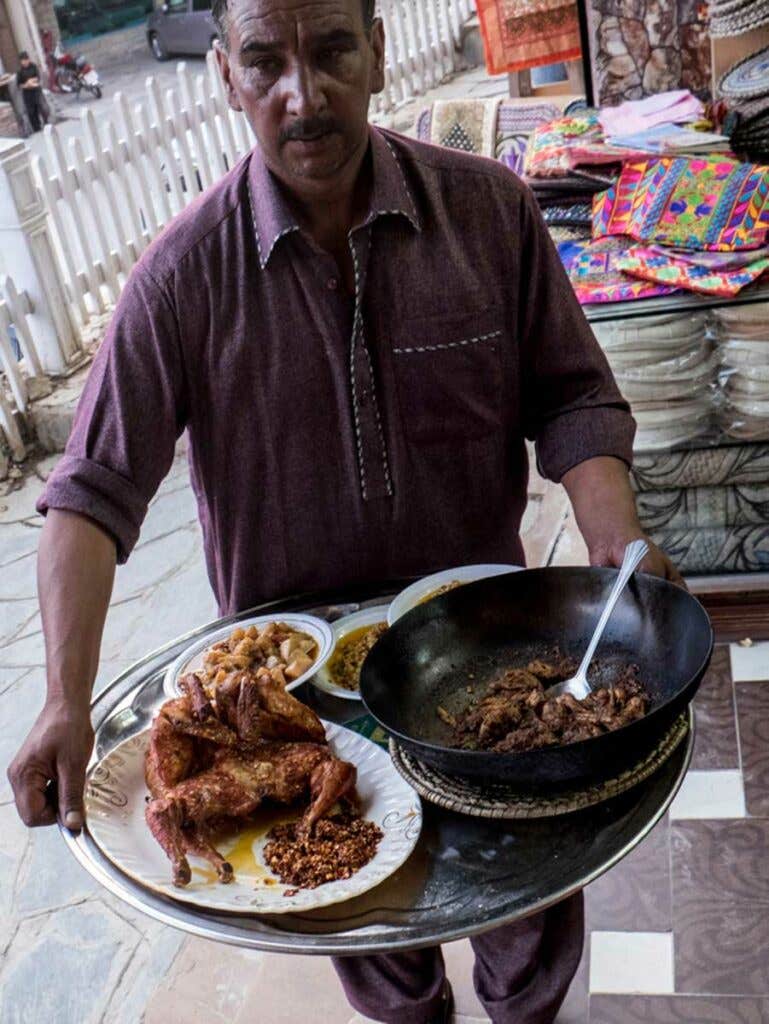
“We go through about 600–700 chickens a day during the high season,” says Ali. “And while there are several copycat restaurants dotted around Nathiagali, our renown is such that most people know to come here. In fact, a lot of the customers tell us that they travelled all the way just to try our chicken.”
“It’s not just regular customers though,” Ali continues. “We’ve had heads of state try our chicken too. [Former Prime Minister] Nawaz Sharif ate at the restaurant, and other previous leaders like General Zia-ul-Haq and Zulfiqar Ali Bhutto ordered our chicken to their residences while they were on holiday here.”
With that, Ali breaks away as the dinner rush enters into full swing and the restaurant becomes increasingly cheerful. Soon after, Azad gets up to leave for the day, happy and content with the day’s commerce and enterprise. As he makes his way home, the streets outside are still raucous and alive, crackling with the same energy and fire as the chicken being served inside.
Keep Reading
Continue to Next Story










